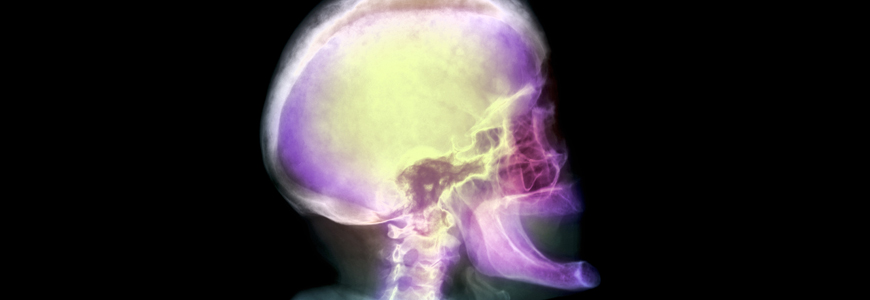New research focusing on optineurin, a protein encoded by the OPTN gene in humans, may prove to be a key to developing more effective medicines for Paget’s Disease of Bone (PDB). Because OPTN was also genetically associated with patients with glaucoma and amyotrophic lateral sclerosis, the work may also contribute to new therapeutic insights into these neurodegenerative diseases.
Two Duke clinician investigators, Teresa Tarrant, MD, a rheumatologist and immunologist, and Henry Tseng, MD, PhD, a neuroscientist as well as an ophthalmologist specializing in glaucoma, are collaborating to study the mechanisms associated with PDB. The research focuses on protein interactions that may better explain the role of optineurin gene defects in PDB.
Existing medications for PDB offer relief from the pain associated with the condition, Tarrant says, but the drugs have less of an effect on associated bone degeneration that leads to fractures and deformities. Patients with PDB may experience other complications that include deafness, nerve compression and tumors.
“Ultimately, this is a disease of aging,” Tarrant says. “There’s still a treatment gap and a need for more effective and enhanced therapies for these patients,” Tarrant says. “We are making progress because of our better understanding of the genetic factors associated with this disease.”
Approximately 2% of people over 50 have PDB; the incidence increases with age, Tarrant says, and may be as high as 8% in the population over 80. “It’s probably more common than we realize,” she says.

Research is at bench stage, Tseng says
Tseng and Tarrant worked independently until Tseng published a study in May in the Journal of Cell Death highlighting his initial findings using an optineurin knockout mouse developed by his laboratory at Duke specifically to better observe the mechanism linking optineurin and PDB. This transgenic mouse was initially developed as a result of Tseng’ glaucoma research. Serendipitously, he and other collaborators at the University of North Carolina Chapel Hill and the National Institute of Environmental Health Sciences discovered that this mouse also exhibited bone degeneration characteristic of PDB.
“Right now, this research is at the bench stage,” Tseng says. “We need to filter the various disease mechanisms to gain a precise understanding of the next steps toward clinical application.” OPTN’s role in cell biogenetics and stress response, Tseng says, may be the key to understanding the degenerative process that is common to PDB and glaucoma. Much of his work focuses on how aging and disease risk factors alter these key cellular processes.
Kenneth W. Lyles, MD, a geriatric medicine and metabolic bone disease specialist, shared Tseng’s research with Tarrant. Through gene transcription regulation studies in the optineurin deficient mice, they saw a potential link between their labs’ investigations into the bone disease. Known nationally for his work with patients who have PDB, Lyles has been a resource to Tarrant and Tseng. He praised their progress so far.
“Having studied and cared for patients with Paget’s Disease of Bone for 30 years, I find Drs. Tseng’s and Tarrant’s work exciting because they have data that may begin to shed light on some previously unsolved findings: increased fibrosis and abnormal bone in areas with disease,” Lyles says.
Tarrant and Tseng are working together to secure research funding for future collaborative studies focusing on PDB with the hope that working on OPTN will uncover novel scientific discoveries in age-related degeneration as well as clues leading toward the development of an effective cure for PDB.

